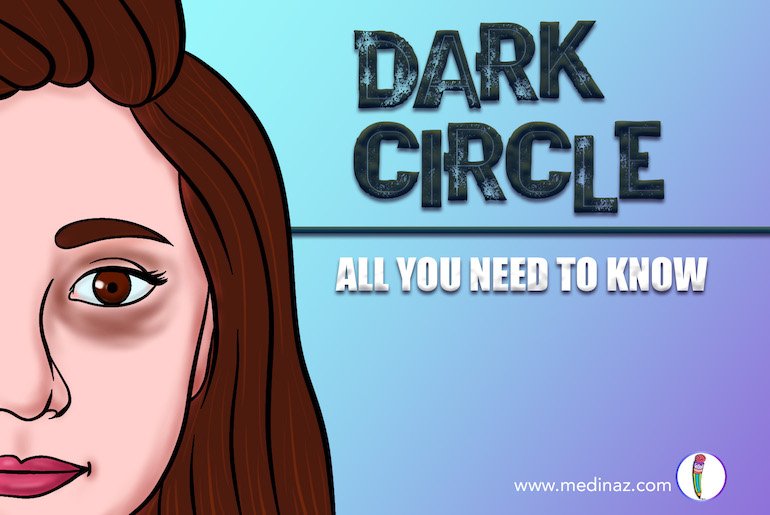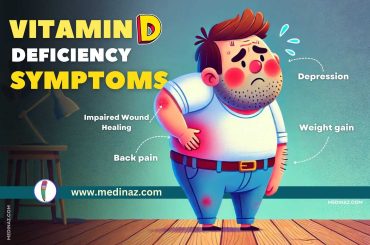This blog explained Dark circle under eyes: All You Need to Know
Dark circles under the eyes can be a frustrating and unsightly problem for many people. They can make you look tired, unhealthy, and older than you actually are. While there are many factors that can contribute to the appearance of dark circles, including genetics, aging, and medical conditions, there are also several things you can do to help reduce their appearance.
In this blog, we will explore the various causes of dark circles and provide tips and strategies for getting rid of them. Whether you’re looking for natural remedies or cosmetics that can help camouflage dark circles, we’ve got you covered. We’ll also provide some tips for preventing dark circles from forming in the first place. If you’re tired of dealing with dark circles, keep reading to learn more about how to get rid of them for good!
Causes of Dark circle under eyes:
There are several factors that can contribute to the appearance of dark circles under the eyes:
Aging:
As we age, the skin around our eyes becomes thinner, making the blood vessels under the skin more visible.
Genetics:
Some people are more prone to dark circles due to their genetic makeup.
Lack of sleep:
Not getting enough sleep can cause the skin around the eyes to look pale, making dark circles more noticeable.
Dehydration:
Dehydration can cause the skin to appear dull and sunken, which can make dark circles more noticeable.
Allergies:
Allergies can cause inflammation and swelling around the eyes, which can contribute to the appearance of dark circles.
Sun exposure:
Sun exposure can cause skin damage and hyperpigmentation, which can contribute to the appearance of dark circles.
Medical conditions:
Certain medical conditions, such as anemia and thyroid problems, can contribute to the appearance of dark circles.
Lifestyle factors:
Factors such as smoking, alcohol consumption, and a poor diet can contribute to the appearance of dark circles.
Here are ten tips that may help reduce the appearance of dark circles under eyes:
1. Get enough sleep to reduce Dark circle under eyes:
Lack of sleep can contribute to the appearance of dark circles. Aim for 7-9 hours of sleep per night.
2. Stay hydrated:
Dehydration can contribute to the appearance of dark circles. Be sure to drink enough water throughout the day.
3. Use a cold compress:
Applying a cold compress to the affected area can help constrict blood vessels and reduce the appearance of dark circles.
4. Apply a facial cream or serum:
Using a facial cream or serum that contains ingredients like vitamin K, retinol, and caffeine can help reduce the appearance of dark circles.
5. Use a concealer:
Concealer can be used to cover up dark circles. Choose a concealer that matches your skin tone and apply it in a thin layer.
6. Get plenty of iron in your diet:
Iron deficiency can contribute to the appearance of dark circles. Be sure to include iron-rich foods in your diet, such as red meat, poultry, beans, and leafy greens.
7. Elevate your head while sleeping:
Sleeping with your head elevated can help reduce the appearance of dark circles.
8. Reduce salt intake:
Too much salt in your diet can lead to fluid retention, which can contribute to the appearance of dark circles.
9. Avoid rubbing your eyes:
Rubbing your eyes can cause irritation and inflammation, which can worsen the appearance of dark circles.
10. Avoid direct sun exposure:
Direct sun exposure can cause skin damage and contribute to the appearance of dark circles. Use a sunscreen with at least SPF 30 to protect your skin.
Commonly asked questions about Dark circle under eyes:
Q: Are dark circles permanent?
A: Dark circles are not permanent and can often be improved or eliminated with the right skincare and lifestyle changes. However, in some cases, dark circles may be due to genetics or underlying medical conditions, which may be more difficult to treat. It is always a good idea to consult with a dermatologist or healthcare professional for a proper diagnosis and treatment plan.
Q: Can stress cause dark circles?
A: Yes, stress can contribute to the appearance of dark circles. Stress can cause a lack of sleep, which can lead to pale skin and dark circles. Stress can also cause inflammation and swelling around the eyes, which can make dark circles more noticeable.
Q: Is it possible to get rid of dark circles naturally?
A: Yes, it is possible to get rid of dark circles naturally. Some natural remedies that may help reduce the appearance of dark circles include getting enough sleep, staying hydrated, using cold compresses, and using skincare products with natural ingredients like vitamin K and caffeine. It is also important to maintain a healthy lifestyle, including a well-balanced diet, regular exercise, and stress management techniques.
Q: How can I get rid of dark circles fast?
A: There are a few things you can try to get rid of dark circles fast:
Get plenty of sleep: Aim for 7-9 hours of sleep per night.
Stay hydrated: Drink plenty of water throughout the day.
Use a cold compress: Applying a cold compress to the affected area can help constrict blood vessels and reduce the appearance of dark circles.
Use a facial cream or serum: Products containing ingredients like vitamin K, retinol, and caffeine can help reduce the appearance of dark circles.
You can Use a concealer: Choose a concealer that matches your skin tone and apply it in a thin layer to cover up dark circles
Q. How can you identify dark circle?
A: Dark circles are typically identified by the presence of dark or discolored skin under the eyes. They can range in color from dark brown or black to blue or purple. The skin under the eyes is thin and delicate, and dark circles can be more noticeable in this area because the blood vessels under the skin are more visible.
Q. Are Dark circle under eyes hormonal?
A: Hormonal changes can sometimes contribute to the appearance of dark circles. Here are a few ways in which hormones can affect the skin around the eyes:
Pregnancy: Hormonal changes during pregnancy can cause fluid retention, which can lead to puffiness and dark circles under the eyes.
Menstruation: Hormonal changes during menstruation can also cause fluid retention and lead to dark circles under the eyes.
Menopause: During menopause, the body’s production of estrogen and other hormones decreases, which can cause thinning of the skin around the eyes. This can make the blood vessels under the skin more visible, leading to dark circles.
Thyroid problems: An imbalance of thyroid hormones can cause a range of skin problems, including dark circles under the eyes.
Q. How many types of dark circles are there?
A: There are several types of dark circles that can occur under the eyes, and they can be caused by a variety of factors. Here are a few common types of dark circles:
1. Pigmentary dark circles: These are caused by excess pigment in the skin, often due to genetics or sun exposure. (ref)
2. Venous dark circles: These are caused by dilated or visible blood vessels under the skin. They may be the result of aging, genetics, or allergies.
3. Structural dark circles: These are caused by shadows cast by hollows or indentations in the skin, often due to aging or volume loss.
4. Allergic dark circles: Allergies or sensitivities cause these, leading to inflammation and swelling around the eyes
5. Tear trough dark circles: These are caused by a depression in the area under the eyes, which can create a shadow and make dark circles more noticeable.
It is important to note that dark circles can be caused by a combination of factors, and it may be necessary to address multiple causes in order to effectively reduce their appearance. If you are concerned about dark circles, it is a good idea to consult with a dermatologist or healthcare professional for a proper diagnosis and treatment plan.
Check out our other Medinaz Health blog for more information
A Visual Learning Platform





